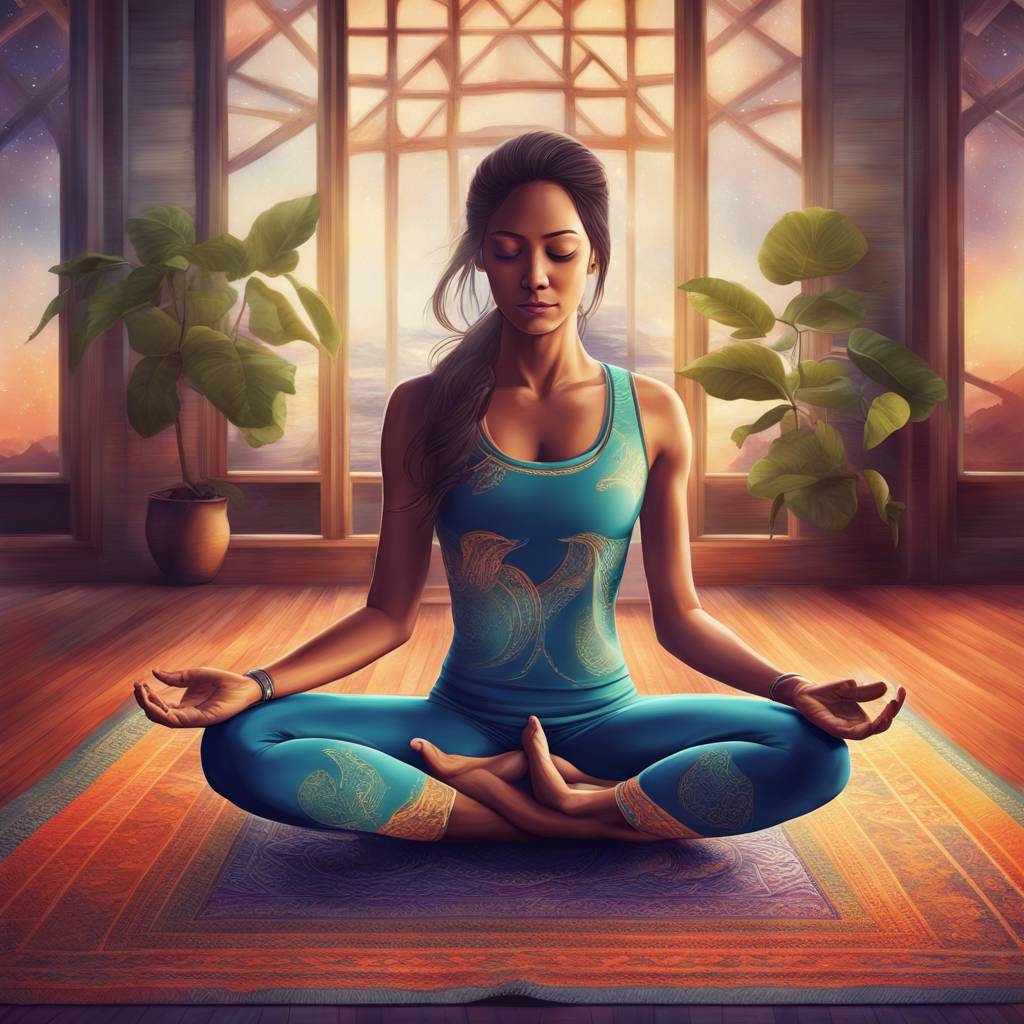Sleep Awareness Month 2024 is shedding light on the importance of sleep for overall health and well-being, as well as providing tips and tricks to help improve sleep quality. One common struggle many people face when trying to fall asleep is a mind that is still racing from the day or worrying about the next. While techniques like reading, drinking herbal tea, or journaling can help, engaging in light exercise, such as yoga, can also be beneficial in promoting relaxation and reducing stress levels to aid in falling asleep. Research suggests that practicing yoga may lead to reduced levels of cortisol, the stress hormone, which can impact sleep patterns. In fact, incorporating yoga into one’s routine has shown promising results in treating and alleviating symptoms of insomnia.
Yoga poses recommended for better sleep include cat-cow pose, forward fold, bridge pose, happy baby, legs-up-the-wall, child’s pose, seated twist, and butterfly pose. These poses are suitable for beginners and are done for about 20 to 30 minutes before bedtime to help relax the body and mind. These poses focus on stretching, breathing, and releasing tension to prepare the body for sleep. Engaging in a yoga routine before bed can aid in calming the mind, reducing cortisol levels, and promoting relaxation, ultimately leading to improved sleep quality.
The significance of cortisol levels on sleep patterns highlights the potential benefits of incorporating yoga into daily routines for better sleep health. Research has shown that increased cortisol levels are often associated with difficulty falling asleep and staying asleep. However, practicing yoga has been linked to reducing cortisol levels, promoting overall well-being, and potentially improving sleep quality. By focusing on breath, movement, and mindfulness, yoga can be a holistic approach to addressing sleep issues and enhancing overall sleep health.
Engaging in a regular yoga practice can complement traditional treatment approaches for sleep disturbances and contribute to a more restful night’s sleep. By incorporating poses specifically tailored for relaxation and stress relief, individuals can create a bedtime routine that promotes relaxation, reduces tension, and prepares the body for rest. The integration of mindfulness techniques and breathwork in yoga can help calm the mind and body, making it easier to unwind and fall asleep naturally. With consistent practice and dedication, yoga for sleep can be a valuable tool in improving sleep quality and overall well-being.
In addition to yoga poses, other natural ways to improve sleep quality include sunlight exposure, dietary choices, and lifestyle habits. Getting exposure to natural light during the day can help regulate the body’s circadian rhythm and promote better sleep at night. Consuming foods that support serotonin production, such as those rich in tryptophan, can also aid in promoting relaxation and sleep. Furthermore, adopting healthy sleep habits, such as creating a soothing bedtime routine and maintaining a consistent sleep schedule, can contribute to better overall sleep hygiene. By exploring different strategies and incorporating a holistic approach to sleep health, individuals can work towards achieving more restorative and rejuvenating sleep.












